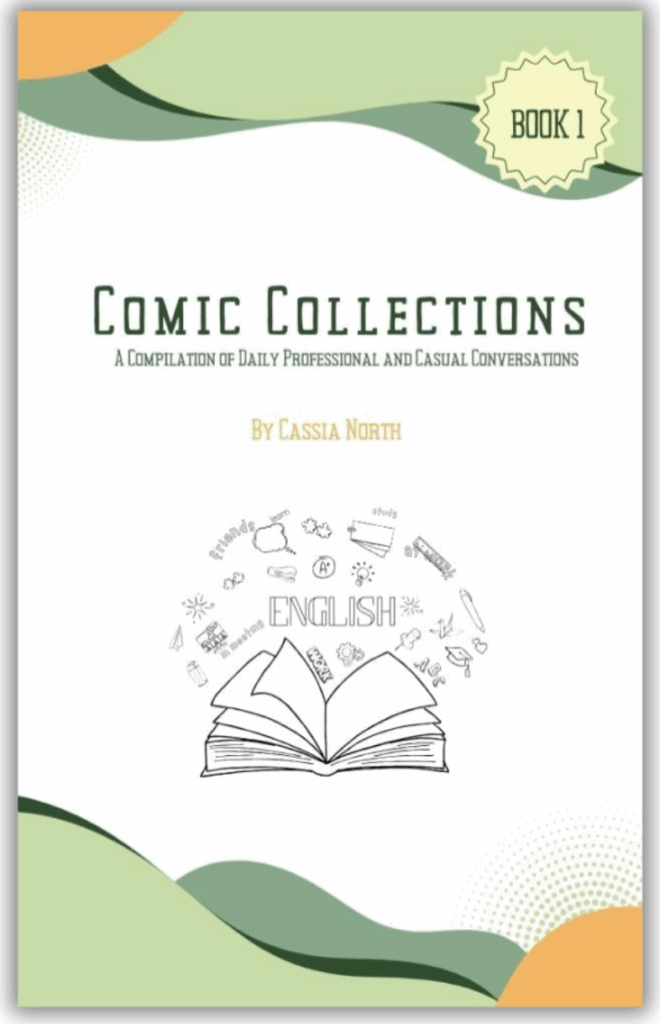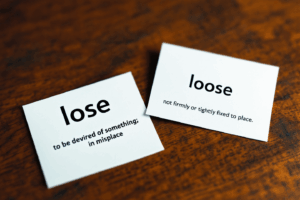
Common English Errors Blogs
"Let's Learn, Explore, and Connect to the World"

Me vs. I: Understanding Subject and Object Pronouns in English
- Patricia Santos
- Common English Errors

Introduction
 Pronouns play a crucial role in English, serving as replacements for nouns to avoid redundancy and facilitate smoother communication. Among the various pronouns, “me” and “I” are fundamental in constructing coherent sentences. However, their correct usage often confounds native and non-native speakers alike. Understanding when correctly using “me” and “I” is vital for clear and grammatically sound communication.
Pronouns play a crucial role in English, serving as replacements for nouns to avoid redundancy and facilitate smoother communication. Among the various pronouns, “me” and “I” are fundamental in constructing coherent sentences. However, their correct usage often confounds native and non-native speakers alike. Understanding when correctly using “me” and “I” is vital for clear and grammatically sound communication.
 The confusion primarily arises from their functions as subject and object pronouns. Many people mistakenly interchange “me” and “I,” leading to sentences that may sound awkward or incorrect. For instance, it’s common to hear someone say, “Me and John went to the store,” instead of the grammatically correct “John and I went to the store.” While often overlooked in casual conversation, such mistakes can be problematic in formal writing and speech.
The confusion primarily arises from their functions as subject and object pronouns. Many people mistakenly interchange “me” and “I,” leading to sentences that may sound awkward or incorrect. For instance, it’s common to hear someone say, “Me and John went to the store,” instead of the grammatically correct “John and I went to the store.” While often overlooked in casual conversation, such mistakes can be problematic in formal writing and speech.
This blog aims to demystify the usage of “me” and “I” by exploring the basic grammar rules, common mistakes, and practical tips for correct usage. By the end of this guide, readers will have a clearer understanding of how to use these pronouns correctly, enhancing both their written and spoken English.
Basic Grammar Rules
In other words, pronouns act like stand-ins for nouns we already mentioned. They prevent our sentences from sounding too repetitive and make communication flow smoother. Pronouns are a key part of English grammar because they let us refer back to things without having to say the whole noun again. There are different kinds of pronouns, like ones that act as the subject or object in a sentence, and each kind has a specific job.
Definition and Role of Pronouns in a Sentence

Pronouns replace nouns to make sentences less cumbersome and more fluid. For example, instead of saying, “Maria went to the store because Maria needed milk,” we use the pronoun “she” to replace the second instance of Maria: “Maria went to the store because she needed milk.” This simplifies the sentence and makes it more engaging and less repetitive.
Explanation of Subject and Object Pronouns

Who is doing what? Subject pronouns tell us. In English, the subject pronouns are “I,” “you,” “he,” “she,” “it,” “we,” and “they.” These pronouns are positioned at the beginning of a clause or sentence, directly preceding the verb.
Object pronouns, conversely, are used as the object of a sentence – the person or thing receiving the action. The object pronouns in English include “me,” “you,” “him,” “her,” “it,” “us,” and “them.” These pronouns typically follow the verb or preposition in a sentence.
Basic Rules for Using “I” as a Subject Pronoun and “Me” as an Object Pronoun

Understanding the roles of “I” and “me” hinges on recognizing their positions within a sentence. “I” is a subject pronoun, which should be used when referring to oneself as the subject acting.
For example:

“I am going to the store.”

“John and I are attending the meeting.”
Conversely, “me” is an object pronoun and should be used when referring to oneself as the object receiving the action. For example:

“The teacher called me.”

“Can you send the report to me?”
A common mistake is using “me” and “I” interchangeably, especially when combined with another subject or object. One can remove the other subject or object from the sentence to determine the correct pronoun. For instance, “John and I went to the store” remains correct when simplified to “I went to the store,” while “John and me went to the store” would be incorrect as “Me went to the store” is grammatically wrong.
Following these basic rules and understanding the distinct roles of subject and object pronouns, one can avoid common mistakes and use “I” and “me” correctly in various contexts.
Common Mistakes and Misconceptions
The correct usage of “me” and “I” often stumps even fluent English speakers, leading to frequent mistakes. These errors typically stem from misunderstanding the roles these pronouns play in a sentence. By examining common mistakes and their underlying reasons, we can clarify these misconceptions and provide simple rules for correct usage.
Examples of Common Mistakes

Incorrect: “Me and Rebecca went to the store.”
Correct: “Rebecca and I went to the store.”

Incorrect: “The teacher gave the homework to John and I.”
Correct: “The teacher gave the homework to John and me.”

Incorrect: “Him and me are best friends.”
Correct: “He and I are best friends.”

Incorrect: “Please send the documents to Jane and I.”
Correct: “Please send the documents to Jane and me.”
Analysis of Why These Mistakes Occur
Overcorrection:
- In an effort to sound more formal or grammatically correct, many people overcorrect by using “I” in places where “me” should be used. This often happens because “I” is perceived as more proper or sophisticated.
Confusion in Compound Subjects and Objects:
- When combining pronouns with other nouns (e.g., “John and me/I”), the correct usage becomes less clear. People often struggle using “me” or “I” in these compound structures.
Lack of Understanding of Pronoun Functions:
- Without a clear grasp of the different functions of subject and object pronouns, it’s easy to misuse “me” and “I.” Understanding that “I” is used for subjects and “me” for objects is crucial.
Clarifying These Misconceptions with Simple Rules
Remove the Other Person:
To determine whether to use “me” or “I,” remove the other person from the sentence. For example, “John and I went to the store” becomes “I went to the store,” which is correct. Similarly, “The teacher gave the homework to John and me” simplifies to “The teacher gave the homework to me.”
Identify the Pronoun’s Function:
Ask yourself if the pronoun is the subject or the object of the sentence. Use “I” if it’s the subject acting and “me” if it’s the object receiving the action.
Use Formal Writing as a Guide:
The correct usage of pronouns is crucial in formal writing. Reading and writing in formal contexts can reinforce the proper use of “me” and “I.”
By applying these simple rules and understanding the common pitfalls, you can avoid the frequent mistakes associated with “me” and “I.” Practicing these guidelines will lead to more grammatically accurate and polished communication.
Subject Pronouns: Understanding "I"
Detailed Explanation of Subject Pronouns
Subject pronouns are the doers in a sentence. In English, the subject pronouns are “I,” “you,” “he,” “she,” “it,” “we,” and “they.” These pronouns replace the name of the person or thing that is the subject to avoid repetition and make sentences more concise.
The pronoun “I” is used when the speaker refers to themselves as the verb’s subject. For instance, in the sentence “I went to the store,” the subject pronoun “I” acts like going to the store. “I” is always used in the subject position and never as an object pronoun.
Examples of Sentences Using “I” Correctly

“I am going to the park this afternoon.”
In this sentence, “I” is the subject performing the action of going to the park.

“When I finished my homework, I watched a movie.”
Here, “I” is the subject of both clauses, performing the actions of finishing homework and watching a movie.

“I believe that this is the best solution to the problem.”
“I” is the subject who holds the belief.

“My friends and I are planning a trip next month.”
In this example, “I” is part of the compound subject “my friends and I,” both performing the action of planning a trip.

“I think that you should see a doctor if you’re feeling unwell.”
“I” is the subject expressing an opinion.
Exercises to Practice Identifying and Using “I” as a Subject Pronoun
To solidify your understanding of using “I” correctly, try the following exercises:
Fill in the Blank:
- ___ went to the concert with my friends.
- ___ am responsible for completing this project.
- After the meeting, ___ will call you.
Correct the Sentence:
- Me and my sister went shopping. (Correct: My sister and I went shopping.)
- The manager gave John and I a new assignment. (Correct: The manager gave John and me a new assignment.)
Create Your Own Sentences:
- Write five sentences using “I” as the subject. For example, “I enjoy reading books on weekends.”
Identify the Subject Pronoun:
- In the sentence “I saw a movie last night,” identify the subject pronoun and explain its role.
By practicing these exercises, you’ll become more comfortable identifying and using “I” as the subject pronoun in various contexts. Remember, “I” is always the performer of the action in a sentence, and using it correctly is essential for clear and effective communication.
Object Pronouns: Understanding "Me"
Detailed Explanation of Object Pronouns
Object pronouns are on the receiving end. They’re affected by what the verb describes. In English, the object pronouns are “me,” “you,” “him,” “her,” “it,” “us,” and “them.” These pronouns replace the noun that is affected by the action of the verb or follows a preposition.
The pronoun “me” is used when the speaker is referring to themselves as the object of the verb or preposition. For instance, in the sentence “She gave me a gift,” the object pronoun “me” is receiving the action of being given a gift. “Me” should never be used as the subject of a sentence.
Examples of Sentences Using “Me” Correctly

“Can you help me with this assignment?”
In this sentence, “me” is the object receiving the help.

“The teacher called me to the front of the class.”
Here, “me” is the object being called.

“She sent the invitation to me.”
“Me” is the object of the preposition “to.”

“Between you and me, I think this plan will work.”
In this example, “me” is the object of the preposition “between.”

“They invited me to join their team.”
“Me” is the object receiving the invitation.
Exercises to Practice Identifying and Using “Me” as an Object Pronoun
To enhance your understanding of using “me” correctly, try the following exercises:
Fill in the Blank:
- Could you pass ___ the salt, please?
- He asked ___ to stay a little longer.
- The story really moved ___.
Correct the Sentence:
- She and me went to the beach. (Correct: She and I went to the beach.)
- John told I the news. (Correct: John told me the news.)
Create Your Own Sentences:
- Write five sentences using “me” as the object. For example, “They gave me a wonderful gift.”
Identify the Object Pronoun:
- In the sentence “He showed me his new car,” identify the object pronoun and explain its role.
By practicing these exercises, you’ll become more adept at identifying and using “me” as the object pronoun in various contexts. Remember, “me” is always the recipient of the action or the object of a proposition, and using it correctly is crucial for clear and effective communication.
Advanced Usage: Complex Sentences and Clauses
Using “Me” and “I” in Complex Sentences
When dealing with complex sentences, the correct usage of “me” and “I” can become more challenging. Complex sentences often contain multiple clauses, each with its own subject and object, which can complicate pronoun selection. Understanding the structure of these sentences and identifying the function of each pronoun is key to correct usage.
Determining the Correct Pronoun in Clauses
Identify the Clauses:
- Break down the sentence into its main and subordinate clauses. Determine the subject and verb in each clause to understand their individual roles.
Subject Pronouns in Independent Clauses:
- Use “I” as the subject pronoun in independent clauses where it performs the action.
- Example: “I will finish my work before I go to the party.”
Object Pronouns in Dependent Clauses:
- Use “me” as the object pronoun in dependent clauses where it receives the action.
- Example: “They asked me if I could help them.”
Compound Subjects and Objects:
- In compound structures, ensure each pronoun functions correctly within its clause.
- Example: “John and I will attend the meeting” (subject) vs. “The invitation was sent to John and me” (object).
Examples and Exercises for Advanced Usage
Examples:
Complex Sentence with Multiple Clauses:

- “When I arrived at the party, my friend called me over to introduce me to his colleagues.”
- Breakdown:
- Main clause: “My friend called me over.”
- Dependent clause: “When I arrived at the party”
- Subordinate clause: “to introduce me to his colleagues.”
Compound Sentence:

- “I thought that she would join us, but she asked me to go ahead without her.”
- Breakdown:
- First independent clause: “I thought that she would join us.”
- Second independent clause: “She asked me to go ahead without her.”
Exercises:
Fill in the Blank:
- ___ went to the store after ___ finished work.
- She gave the book to John and ___ before ___ left.
Correct the Sentence:
- Me and my team finished the project, which made my boss proud of I. (Correct: My team and I finished the project, which made my boss proud of me.)
- The coach called I and Sarah to discuss the game plan. (Correct: The coach called Sarah and me to discuss the game plan.)
Identify the Pronoun:
- In the sentence “After I read the book, the author signed it for me,” identify the pronouns and their roles.
Advanced Exercise:
Rewrite the following paragraph, correcting the usage of “me” and “I”:
“Me and my brother went hiking last weekend. During the hike, he and me talked about our plans for the summer. At the end of the trail, our friend met I and gave me a lift back home. The experience was fun for my brother and I.”
Corrected Version:
“My brother and I went hiking last weekend. During the hike, he and I talked about our plans for the summer. At the end of the trail, our friend met me and gave me a lift back home. The experience was fun for my brother and me.”
By practicing these exercises and understanding the rules, you can master the use of “me” and “I” in complex sentences, ensuring your communication is both clear and grammatically correct.
Tips and Tricks for Remembering the Rules
Mastering the use of “me” and “I” can be challenging, but several mnemonic devices and tips can simplify the process. By incorporating these strategies, you can confidently choose the correct pronoun in various contexts.
Mnemonic Devices and Tips for Remembering When to Use “Me” and “I”
- Remove the Other Person Test:
- When you’re unsure whether to use “me” or “I,” remove the other person from the sentence. This helps you determine if the sentence still makes sense. For example:
- Instead of “Me and John are going,” think “Me is going” (incorrect) versus “I am going” (correct).
- When you’re unsure whether to use “me” or “I,” remove the other person from the sentence. This helps you determine if the sentence still makes sense. For example:
- Subject vs. Object Reminder:
- Remember that “I” is always the subject (the one doing the action) and “me” is always the object (the one receiving the action). For instance:
- “I wrote the letter” (subject).
- “The letter was written by me” (object).
- Remember that “I” is always the subject (the one doing the action) and “me” is always the object (the one receiving the action). For instance:
- Think of the Action:
- If the pronoun is doing something, use “I.” If something is being done to the pronoun, use “me.” Example:
- “I kicked the ball” (I am doing the kicking).
- “The ball was kicked by me” (me is receiving the action).
- If the pronoun is doing something, use “I.” If something is being done to the pronoun, use “me.” Example:
Common Phrases and Shortcuts to Avoid Confusion
- Common Phrases:
- Familiarize yourself with common phrases where “me” and “I” are correctly used:
- “Between you and me” (correct usage of “me”).
- “You and I” as the subject (correct usage of “I”).
- Familiarize yourself with common phrases where “me” and “I” are correctly used:
- Shortcuts:
- Use the following shortcuts to quickly determine the correct pronoun:
- For subjects: “He and I” or “She and I” will always be correct when the pronoun is the subject.
- For objects: “Him and me” or “Her and me” will always be correct when the pronoun is the object.
- Use the following shortcuts to quickly determine the correct pronoun:
- “We” and “Us” Trick:
- Replace “me” and “I” with “we” and “us” to see which sounds right:
- “John and I went to the store” becomes “We went to the store” (correct).
- “The gift was given to John and me” becomes “The gift was given to us” (correct).
- Replace “me” and “I” with “we” and “us” to see which sounds right:
By using these mnemonic devices, common phrases, and shortcuts, you can significantly reduce confusion and improve your grammatical accuracy when choosing between “me” and “I.” Regular practice and application of these tips will make correct usage second nature.
Conclusion
 Understanding the correct usage of “me” and “I” is essential for clear and effective communication in English. Throughout this blog, we have explored the basic grammar rules governing these pronouns, identified common mistakes and misconceptions, and provided practical examples and exercises to enhance comprehension.
Understanding the correct usage of “me” and “I” is essential for clear and effective communication in English. Throughout this blog, we have explored the basic grammar rules governing these pronouns, identified common mistakes and misconceptions, and provided practical examples and exercises to enhance comprehension.
 To recap, “I” is used as a subject pronoun, performing the action in a sentence, while “me” is used as an object pronoun, receiving the action. Recognizing their roles in different sentence structures is key to avoiding common errors. We also delved into more complex scenarios, such as compound subjects and objects, and provided advanced exercises to reinforce proper usage.
To recap, “I” is used as a subject pronoun, performing the action in a sentence, while “me” is used as an object pronoun, receiving the action. Recognizing their roles in different sentence structures is key to avoiding common errors. We also delved into more complex scenarios, such as compound subjects and objects, and provided advanced exercises to reinforce proper usage.
 By practicing the tips and mnemonic devices shared in this blog, such as the “Remove the Other Person Test” and the “We and Us Trick,” you can confidently choose the correct pronoun in any context. Regular practice and attention to detail will make these rules second nature.
By practicing the tips and mnemonic devices shared in this blog, such as the “Remove the Other Person Test” and the “We and Us Trick,” you can confidently choose the correct pronoun in any context. Regular practice and attention to detail will make these rules second nature.
In conclusion, mastering the distinction between “me” and “I” not only improves your grammar but also enhances your overall communication skills. Proper pronoun usage reflects a strong command of the language and contributes to clearer, more professional writing and speech. Keep practicing, and soon, you will find that using “me” and “I” correctly becomes an effortless part of your everyday language.
References
- Stevens J. The Importance of Pronouns in English Grammar. Grammar Insights Blog. Published May 10, 2023. Accessed July 5, 2024. https://www.grammarsinsightsblog.com/importance-of-pronouns
- Smith A. Common Mistakes with Subject and Object Pronouns. English Language Tutor Blog. Published March 22, 2023. Accessed July 5, 2024. https://www.englishlanguagetutorblog.com/common-pronoun-mistakes
Latest Blogs

Present Perfect Continuous 2
English Blogs “Let’s Learn, Explore, and Connect to the World” Present Perfect Continuous 2 II. Understanding the Present Perfect Continuous The Present Perfect Continuous tense

Instagram Reels & Stories: Harnessing the Power of Short-Form Video Content for Engagement and Reach
Digital Marketing Blogs “Let’s Learn, Explore, and Connect to the World” Instagram Reels & Stories: Harnessing the Power of Short-Form Video Content for Engagement and
Reading comprehension quiz
Check out our books and more!

Comic Collections : A Compilation of Daily Professional and Casual Conversations (Book 3)
Discover the joy of conversation with “Comic Collections: A Compilation of Daily Professional and Casual Conversations,” a whimsically illustrated comic book that transforms talking into an adventure. Ideal for those eager to polish their chatting skills, this light-hearted guide is a trove of insights presented in a uniquely entertaining format.
Check out our Blogs!
Read our everyday blogs and gain new knowledge, skills, and inspiration to support your learning journey here in SEKAEL.


Explore English Blogs to improve your speaking, listening, reading, and writing skills in real-life situations.








 English is a rich and nuanced language with subtleties that can sometimes confound even the most seasoned speakers. Among the common pitfalls that many encounter is the proper use of “less” and “fewer.” While seemingly interchangeable, these two words adhere to specific grammatical rules that distinguish them. Misusing “less” and “fewer” is a frequent error in everyday conversations, marketing materials, and the media. A clear understanding of these terms is key to effective communication.
English is a rich and nuanced language with subtleties that can sometimes confound even the most seasoned speakers. Among the common pitfalls that many encounter is the proper use of “less” and “fewer.” While seemingly interchangeable, these two words adhere to specific grammatical rules that distinguish them. Misusing “less” and “fewer” is a frequent error in everyday conversations, marketing materials, and the media. A clear understanding of these terms is key to effective communication. “Less” and “fewer” serve distinct functions in the English language. “Less” is used with uncountable nouns, referring to a singular mass or quantity that cannot be individually counted, such as “water,” “money,” or “time.” On the other hand, “fewer” is used with countable nouns, indicating several individual items or units, like “books,” “apples,” or “cars.” Despite their clear distinctions, their misuse is rampant, often due to a lack of awareness about these grammatical rules.
“Less” and “fewer” serve distinct functions in the English language. “Less” is used with uncountable nouns, referring to a singular mass or quantity that cannot be individually counted, such as “water,” “money,” or “time.” On the other hand, “fewer” is used with countable nouns, indicating several individual items or units, like “books,” “apples,” or “cars.” Despite their clear distinctions, their misuse is rampant, often due to a lack of awareness about these grammatical rules. The distinction between “less” and “fewer” has been part of English grammar for centuries, tracing its roots back to Old and Middle English. Historically, “less” and “fewer” were used much as they are today, with “less” being used for uncountable nouns and “fewer” for countable nouns. However, the strict application of these rules has not always been as rigid as in modern grammar.
The distinction between “less” and “fewer” has been part of English grammar for centuries, tracing its roots back to Old and Middle English. Historically, “less” and “fewer” were used much as they are today, with “less” being used for uncountable nouns and “fewer” for countable nouns. However, the strict application of these rules has not always been as rigid as in modern grammar. In Old English, the word “less” (derived from the Old English “lǣssa”) was commonly used in contexts where modern English would require “fewer.” Over time, a clearer distinction began to emerge as the language evolved. By the time of Middle English, around the 14th century, “fewer” (from the Old English “fēawer”) started to be used more consistently for countable nouns. This shift reflected a broader trend towards more precise grammatical structures in English.
In Old English, the word “less” (derived from the Old English “lǣssa”) was commonly used in contexts where modern English would require “fewer.” Over time, a clearer distinction began to emerge as the language evolved. By the time of Middle English, around the 14th century, “fewer” (from the Old English “fēawer”) started to be used more consistently for countable nouns. This shift reflected a broader trend towards more precise grammatical structures in English. The authoritarian rule that mandates using “fewer” with countable nouns and “less” with uncountable nouns was more firmly established in the 18th century. Grammarians of that era, such as Robert Lowth, played a significant role in codifying these rules. They advocated for a more standardized approach to grammar, which included the distinction between “less” and “fewer.” This period marked the beginning of modern English grammar rules, which aimed to bring clarity and consistency to the language.
The authoritarian rule that mandates using “fewer” with countable nouns and “less” with uncountable nouns was more firmly established in the 18th century. Grammarians of that era, such as Robert Lowth, played a significant role in codifying these rules. They advocated for a more standardized approach to grammar, which included the distinction between “less” and “fewer.” This period marked the beginning of modern English grammar rules, which aimed to bring clarity and consistency to the language. Despite these efforts, the interchangeability of “less” and “fewer” continued in informal speech and writing. Even today, phrases like “10 items or less” remain common, especially in spoken English and informal contexts. This persistence highlights language’s flexibility and evolving nature, where strict rules often give way to everyday usage.
Despite these efforts, the interchangeability of “less” and “fewer” continued in informal speech and writing. Even today, phrases like “10 items or less” remain common, especially in spoken English and informal contexts. This persistence highlights language’s flexibility and evolving nature, where strict rules often give way to everyday usage.






















 In the realm of English grammar, the distinction between “less” and “fewer” plays a crucial role in ensuring clarity and precision. Through this exploration, we’ve uncovered the historical context that has shaped their usage, delved into the basic rules that differentiate them, identified common mistakes, and highlighted the significance of correct usage across various contexts.
In the realm of English grammar, the distinction between “less” and “fewer” plays a crucial role in ensuring clarity and precision. Through this exploration, we’ve uncovered the historical context that has shaped their usage, delved into the basic rules that differentiate them, identified common mistakes, and highlighted the significance of correct usage across various contexts. Understanding that “less” is used with uncountable nouns while “fewer” is used with countable nouns is fundamental. This knowledge helps to avoid common pitfalls, such as those found in supermarkets and everyday speech. By recognizing the impact of correct usage in professional and academic settings, we appreciate how these small but significant details can enhance our credibility and effectiveness in communication.
Understanding that “less” is used with uncountable nouns while “fewer” is used with countable nouns is fundamental. This knowledge helps to avoid common pitfalls, such as those found in supermarkets and everyday speech. By recognizing the impact of correct usage in professional and academic settings, we appreciate how these small but significant details can enhance our credibility and effectiveness in communication. Practical tips and visual aids can make the rules easier to remember and apply. Mnemonics like “if you can count it, use fewer” or thinking of a countable counterpart are simple yet effective strategies. Visual tools like comparison charts and flowcharts can provide quick references and reinforce understanding.
Practical tips and visual aids can make the rules easier to remember and apply. Mnemonics like “if you can count it, use fewer” or thinking of a countable counterpart are simple yet effective strategies. Visual tools like comparison charts and flowcharts can provide quick references and reinforce understanding. Real-life examples from literature, news, and daily conversations demonstrate the importance of applying these rules correctly. They show how accurate usage not only prevents misunderstandings but also reflects a strong command of the language.
Real-life examples from literature, news, and daily conversations demonstrate the importance of applying these rules correctly. They show how accurate usage not only prevents misunderstandings but also reflects a strong command of the language.








 Even experienced users of English can get tripped up by the fine points of grammar, and one area that frequently causes confusion is the difference between “who” and “whom.” Despite their similar appearance and related functions, these two words serve distinct grammatical purposes. Misusing “who” and “whom” not only disrupts the flow of a sentence but can also undermine the clarity of communication.
Even experienced users of English can get tripped up by the fine points of grammar, and one area that frequently causes confusion is the difference between “who” and “whom.” Despite their similar appearance and related functions, these two words serve distinct grammatical purposes. Misusing “who” and “whom” not only disrupts the flow of a sentence but can also undermine the clarity of communication. In this blog, we will break down the basics of “who” and “whom,” providing clear definitions and practical examples to illustrate their proper usage. We will explore the rules that govern their application, offer tips and tricks to remember the differences and address common questions and confusions. This guide will turn you into a “who” and “whom” whiz! By the finish, you’ll be using them perfectly in any situation. Let’s delve into the grammar essentials and resolve this grammatical difficulty once and for all.
In this blog, we will break down the basics of “who” and “whom,” providing clear definitions and practical examples to illustrate their proper usage. We will explore the rules that govern their application, offer tips and tricks to remember the differences and address common questions and confusions. This guide will turn you into a “who” and “whom” whiz! By the finish, you’ll be using them perfectly in any situation. Let’s delve into the grammar essentials and resolve this grammatical difficulty once and for all. A subject pronoun is used when the pronoun is the sentence’s subject. The subject of a sentence performs the action. For example, in the sentence, “She runs every morning,” “she” is the subject pronoun acting for running. Similarly, “who” is a subject pronoun. You use “who” when referring to the person doing the action. For instance, “Who is coming to the party?” Here, “who” is the subject performing the action of coming.
A subject pronoun is used when the pronoun is the sentence’s subject. The subject of a sentence performs the action. For example, in the sentence, “She runs every morning,” “she” is the subject pronoun acting for running. Similarly, “who” is a subject pronoun. You use “who” when referring to the person doing the action. For instance, “Who is coming to the party?” Here, “who” is the subject performing the action of coming. By distinguishing between subject and object pronouns, you can accurately determine when to use “who” and “whom.” Recognizing the role each pronoun plays within the context of a sentence is crucial for proper grammatical structure and effective communication. This groundwork prepares us to explore the finer points of using “who” and “whom” through specific rules and examples.
By distinguishing between subject and object pronouns, you can accurately determine when to use “who” and “whom.” Recognizing the role each pronoun plays within the context of a sentence is crucial for proper grammatical structure and effective communication. This groundwork prepares us to explore the finer points of using “who” and “whom” through specific rules and examples.






























 Mastering the difference between “who” and “whom” is a vital step in improving your English grammar skills. Think of “who” as the star of the sentence, doing the action. “Whom” is more like the supporting cast, receiving the action. By applying the he/him test and recognizing the roles these pronouns play in sentences, you can confidently use them correctly. Regular practice and exercises will solidify your understanding and enhance your communication.
Mastering the difference between “who” and “whom” is a vital step in improving your English grammar skills. Think of “who” as the star of the sentence, doing the action. “Whom” is more like the supporting cast, receiving the action. By applying the he/him test and recognizing the roles these pronouns play in sentences, you can confidently use them correctly. Regular practice and exercises will solidify your understanding and enhance your communication.














 Fill-in-the-Blank Exercises:
Fill-in-the-Blank Exercises: Daily Writing Prompts:
Daily Writing Prompts: Peer Review:
Peer Review: Flashcards:
Flashcards: 5. Engage in Online Forums or Social Media Discussions:
5. Engage in Online Forums or Social Media Discussions: 6. Mobile Apps and Games:
6. Mobile Apps and Games: Mastering the difference between “lose” and “loose” is more than just a detail of grammar—it’s a step towards clearer and more effective communication. By understanding the distinct meanings, practicing their correct usage, and remembering the tips and mnemonic devices shared, you can avoid common errors that often lead to confusion. As you continue to engage with English, whether in writing or speech, keep in mind these distinctions and apply them conscientiously. Remember, every effort you make to refine your language skills contributes to more precise and confident expression, enhancing personal and professional communication.
Mastering the difference between “lose” and “loose” is more than just a detail of grammar—it’s a step towards clearer and more effective communication. By understanding the distinct meanings, practicing their correct usage, and remembering the tips and mnemonic devices shared, you can avoid common errors that often lead to confusion. As you continue to engage with English, whether in writing or speech, keep in mind these distinctions and apply them conscientiously. Remember, every effort you make to refine your language skills contributes to more precise and confident expression, enhancing personal and professional communication.



 The words “then” and “than” are among the most commonly confused terms in the English language. While they sound quite similar, these words perform distinct functions and are not interchangeable. Misusing them can lead to misunderstandings and diminish the clarity of your communication. “Then” generally relates to time and sequence, whereas “than” is used in comparisons. Such distinctions are crucial in both spoken and written English, as they can significantly impact the meaning of your statements.
The words “then” and “than” are among the most commonly confused terms in the English language. While they sound quite similar, these words perform distinct functions and are not interchangeable. Misusing them can lead to misunderstandings and diminish the clarity of your communication. “Then” generally relates to time and sequence, whereas “than” is used in comparisons. Such distinctions are crucial in both spoken and written English, as they can significantly impact the meaning of your statements. Understanding the proper use of “then” and “than” not only enhances your language accuracy but also boosts your confidence in writing and everyday conversations. This blog aims to clarify these differences with simple explanations and practical tips, ensuring you never mix them up again. Let’s dive into the specifics of each word to help cement your understanding and use of these frequently muddled terms.
Understanding the proper use of “then” and “than” not only enhances your language accuracy but also boosts your confidence in writing and everyday conversations. This blog aims to clarify these differences with simple explanations and practical tips, ensuring you never mix them up again. Let’s dive into the specifics of each word to help cement your understanding and use of these frequently muddled terms.















 In everyday speech and writing, maintaining the correct use of “than” is vital for articulating preferences, opinions, and comparative facts accurately. Whether discussing personal preferences, making professional recommendations, or engaging in academic writing, the ability to compare effectively is indispensable, making “than” a fundamental tool in the arsenal of effective communication.
In everyday speech and writing, maintaining the correct use of “than” is vital for articulating preferences, opinions, and comparative facts accurately. Whether discussing personal preferences, making professional recommendations, or engaging in academic writing, the ability to compare effectively is indispensable, making “than” a fundamental tool in the arsenal of effective communication.








 The precision of language in professional and academic contexts cannot be overstressed, and the correct use of “then” versus “than” is a quintessential part of this precision. Misusing these words can undermine the credibility of your communication, potentially leading to misinterpretations of your messages or assessments of your attention to detail.
The precision of language in professional and academic contexts cannot be overstressed, and the correct use of “then” versus “than” is a quintessential part of this precision. Misusing these words can undermine the credibility of your communication, potentially leading to misinterpretations of your messages or assessments of your attention to detail. In academic writing, clarity and accuracy are paramount. Using “then” when “than” is needed—or vice versa—can confuse readers and distract from the content’s strength. For instance, an incorrect sentence like “The results of the study were more significant then those of previous studies” misleads the reader into thinking about a sequence rather than a comparison, which can obscure the importance of the findings.
In academic writing, clarity and accuracy are paramount. Using “then” when “than” is needed—or vice versa—can confuse readers and distract from the content’s strength. For instance, an incorrect sentence like “The results of the study were more significant then those of previous studies” misleads the reader into thinking about a sequence rather than a comparison, which can obscure the importance of the findings. Similarly, in professional settings, such as business reports, presentations, or emails, clear communication helps to build trust and respect between colleagues and clients. An error involving “then” or “than” might seem minor, but it can detract from the over
Similarly, in professional settings, such as business reports, presentations, or emails, clear communication helps to build trust and respect between colleagues and clients. An error involving “then” or “than” might seem minor, but it can detract from the over Grasping the distinctions between “then” and “than” is vital for clear and effective communication in English. “Then” relates to time and sequence, whereas “than” is used solely for comparisons. Incorrect use of these words can cause confusion and undermine the credibility of your writing. By employing the tips and strategies discussed, such as associating each word with a key concept and practicing with simple sentences, you can greatly enhance your linguistic precision. Always remember to proofread your work for these common errors. Learning to use “then” and “than” correctly will not only enhance your writing skills but also increase your confidence in everyday communication.
Grasping the distinctions between “then” and “than” is vital for clear and effective communication in English. “Then” relates to time and sequence, whereas “than” is used solely for comparisons. Incorrect use of these words can cause confusion and undermine the credibility of your writing. By employing the tips and strategies discussed, such as associating each word with a key concept and practicing with simple sentences, you can greatly enhance your linguistic precision. Always remember to proofread your work for these common errors. Learning to use “then” and “than” correctly will not only enhance your writing skills but also increase your confidence in everyday communication.





 Homophones are words that sound the same but differ in meaning, spelling, or both, making them some of the trickier components of the English language to learn. The reason they cause confusion is primarily due to their similar sound, which can lead to errors in writing, especially when the nuances of their meanings are not well understood. These mistakes are not just common among learners of English but also occasionally trip up native speakers.
Homophones are words that sound the same but differ in meaning, spelling, or both, making them some of the trickier components of the English language to learn. The reason they cause confusion is primarily due to their similar sound, which can lead to errors in writing, especially when the nuances of their meanings are not well understood. These mistakes are not just common among learners of English but also occasionally trip up native speakers. Understanding and mastering the correct usage of homophones is crucial because they can significantly affect the clarity of communication. Misusing homophones can lead to misunderstandings and ambiguity in written texts. To use them correctly, it is essential to grasp their definitions and the context in which they are used. This understanding begins with exploring each homophone in detail, starting with the commonly mixed-up trio: “there,” “their,” and “they’re.”
Understanding and mastering the correct usage of homophones is crucial because they can significantly affect the clarity of communication. Misusing homophones can lead to misunderstandings and ambiguity in written texts. To use them correctly, it is essential to grasp their definitions and the context in which they are used. This understanding begins with exploring each homophone in detail, starting with the commonly mixed-up trio: “there,” “their,” and “they’re.”
 Furthermore, “there” can function as a noun, although this usage is less common. In this capacity, it refers to a state or condition, as in the phrase “getting from here to there.” This usage is more abstract and is often philosophical or reflective about the journey between two different states or conditions.
Furthermore, “there” can function as a noun, although this usage is less common. In this capacity, it refers to a state or condition, as in the phrase “getting from here to there.” This usage is more abstract and is often philosophical or reflective about the journey between two different states or conditions. The versatility of “there” can make it confusing, but the key to understanding its correct application lies in context. Whether indicating a location, introducing a sentence, or describing a state, “there” is always used to point out or declare something. It is never used to denote possession, which is where it often gets confused with “their.”
The versatility of “there” can make it confusing, but the key to understanding its correct application lies in context. Whether indicating a location, introducing a sentence, or describing a state, “there” is always used to point out or declare something. It is never used to denote possession, which is where it often gets confused with “their.” The word “their” is a possessive adjective used to indicate ownership or association belonging to some specific people or things previously mentioned or easily identified in the context. Unlike “there,” which relates to location or existence, “their” refers directly to possessions or associations with people, animals, or things. It always precedes a noun, modifying it to denote possession.
The word “their” is a possessive adjective used to indicate ownership or association belonging to some specific people or things previously mentioned or easily identified in the context. Unlike “there,” which relates to location or existence, “their” refers directly to possessions or associations with people, animals, or things. It always precedes a noun, modifying it to denote possession. The confusion often arises not from its usage but from its sound, which is homophonous with “there” and “they’re.” This can lead to errors in writing where one might incorrectly substitute “their” with one of these homophones. However, remembering that “there” is always used in contexts of ownership can help clarify its correct application.
The confusion often arises not from its usage but from its sound, which is homophonous with “there” and “they’re.” This can lead to errors in writing where one might incorrectly substitute “their” with one of these homophones. However, remembering that “there” is always used in contexts of ownership can help clarify its correct application. Because “their” addresses ownership, it is inherently plural, though it is also used singularly in cases respecting gender neutrality, such as in “Someone left their book on the table.” Here, “their” allows for an unspecified gender of the person who owns the book, aligning with contemporary efforts to use inclusive language.
Because “their” addresses ownership, it is inherently plural, though it is also used singularly in cases respecting gender neutrality, such as in “Someone left their book on the table.” Here, “their” allows for an unspecified gender of the person who owns the book, aligning with contemporary efforts to use inclusive language. “They’re” is a contraction of the words “they” and “are,” which serves as a straightforward way to streamline speech and writing. This form is typically used in informal settings and is very common in spoken English. It combines a pronoun and a verb, indicating a present action or state being experienced by multiple subjects.
“They’re” is a contraction of the words “they” and “are,” which serves as a straightforward way to streamline speech and writing. This form is typically used in informal settings and is very common in spoken English. It combines a pronoun and a verb, indicating a present action or state being experienced by multiple subjects. The contraction “they’re” can also describe a current state of being, as seen in “They’re happy with the results.” Here, it is used to express the emotions or conditions of the subjects at the moment. Contractions like “they’re” are particularly useful for making the language flow more naturally and mimicking spoken language in written form.
The contraction “they’re” can also describe a current state of being, as seen in “They’re happy with the results.” Here, it is used to express the emotions or conditions of the subjects at the moment. Contractions like “they’re” are particularly useful for making the language flow more naturally and mimicking spoken language in written form.








 Mastering the correct use of “there,” “their,” and “they’re” is essential for clear and effective communication in English. These homophones, while sounding identical, carry different meanings and serve unique functions within sentences. Misusing them can not only lead to confusion but also detract from the credibility of your writing.
Mastering the correct use of “there,” “their,” and “they’re” is essential for clear and effective communication in English. These homophones, while sounding identical, carry different meanings and serve unique functions within sentences. Misusing them can not only lead to confusion but also detract from the credibility of your writing. To avoid common pitfalls, it’s important to understand the distinct roles these words play. Remember: “there” indicates location or existence, “their” denotes possession, and “they’re” is a contraction for “they are,” used to describe actions or states of being. By applying the practical tips provided, such as using mnemonic devices, practicing with replacement, and diligent proofreading, you can reinforce their correct usage.
To avoid common pitfalls, it’s important to understand the distinct roles these words play. Remember: “there” indicates location or existence, “their” denotes possession, and “they’re” is a contraction for “they are,” used to describe actions or states of being. By applying the practical tips provided, such as using mnemonic devices, practicing with replacement, and diligent proofreading, you can reinforce their correct usage.



 The word “affect,” at first glance, might seem daunting due to its common confusion with “effect.” However, its usage and significance in the English language are clear and distinct once demystified. Primarily functioning as a verb, “affect” conveys the action of having an impact on or making a difference to someone or something. It’s about the influence that alters outcomes or states of being. Beyond its general application, “affect” holds a particular place in psychological contexts, where it can also emerge as a noun to describe emotions or desires that influence behavior.
The word “affect,” at first glance, might seem daunting due to its common confusion with “effect.” However, its usage and significance in the English language are clear and distinct once demystified. Primarily functioning as a verb, “affect” conveys the action of having an impact on or making a difference to someone or something. It’s about the influence that alters outcomes or states of being. Beyond its general application, “affect” holds a particular place in psychological contexts, where it can also emerge as a noun to describe emotions or desires that influence behavior.










 In psychology, “affect” frequently steps out of its usual role as a verb to become a noun, denoting an individual’s experience of feeling or emotion. Psychological “affect” is a crucial concept in understanding human behavior, as it encompasses a range of emotions from intense happiness to profound sadness. For example, a study might examine the “affect” of social media on teenagers’ self-esteem, focusing on emotional responses rather than the broader influence or outcomes.
In psychology, “affect” frequently steps out of its usual role as a verb to become a noun, denoting an individual’s experience of feeling or emotion. Psychological “affect” is a crucial concept in understanding human behavior, as it encompasses a range of emotions from intense happiness to profound sadness. For example, a study might examine the “affect” of social media on teenagers’ self-esteem, focusing on emotional responses rather than the broader influence or outcomes. In legal and scientific discourse, “effect” often takes center stage, particularly when discussing the consequences or outcomes of laws, policies, or experimental conditions. Legal documents may detail the “effects” of legislation on certain populations or industries, emphasizing the results of enacting specific laws. Similarly, in scientific research, discussing the “effects” of a new drug or treatment involves analyzing the results observed during clinical trials.
In legal and scientific discourse, “effect” often takes center stage, particularly when discussing the consequences or outcomes of laws, policies, or experimental conditions. Legal documents may detail the “effects” of legislation on certain populations or industries, emphasizing the results of enacting specific laws. Similarly, in scientific research, discussing the “effects” of a new drug or treatment involves analyzing the results observed during clinical trials. Understanding the context in which these words are used can greatly enhance clarity and precision in communication. For instance, legal and scientific professionals need to articulate the “effects” of their actions and findings accurately to inform, persuade, or document outcomes. In psychology, distinguishing between “affect” as an emotional response and “effect” as the outcome of interventions is critical for clear, effective communication.
Understanding the context in which these words are used can greatly enhance clarity and precision in communication. For instance, legal and scientific professionals need to articulate the “effects” of their actions and findings accurately to inform, persuade, or document outcomes. In psychology, distinguishing between “affect” as an emotional response and “effect” as the outcome of interventions is critical for clear, effective communication.
 The ability to distinguish between “affect” and “effect” transcends mere academic exercise. It empowers individuals to convey their thoughts with precision, enhancing the clarity and impact of their message. It fosters a deeper level of understanding and engagement among audiences, regardless of the setting.
The ability to distinguish between “affect” and “effect” transcends mere academic exercise. It empowers individuals to convey their thoughts with precision, enhancing the clarity and impact of their message. It fosters a deeper level of understanding and engagement among audiences, regardless of the setting. This exploration serves as a microcosm of the broader linguistic adventure. English, with its rich tapestry of nuances, invites continuous learning and curiosity. Each word, with its specific contours and shades of meaning, contributes to the vibrant mosaic of communication. Embracing the challenge of linguistic precision not only refines one’s ability to express complex ideas but also enriches the overall capacity for critical thinking and nuanced understanding.
This exploration serves as a microcosm of the broader linguistic adventure. English, with its rich tapestry of nuances, invites continuous learning and curiosity. Each word, with its specific contours and shades of meaning, contributes to the vibrant mosaic of communication. Embracing the challenge of linguistic precision not only refines one’s ability to express complex ideas but also enriches the overall capacity for critical thinking and nuanced understanding.
 In the landscape of communication, where clarity is king and precision its crown jewel, mastering the nuances of language opens doors to worlds of understanding and expression. Let us stride forward with confidence, armed with the knowledge to navigate the complexities of “affect” and “effect,” and eager to uncover the next linguistic treasure hidden within the folds of the English language.
In the landscape of communication, where clarity is king and precision its crown jewel, mastering the nuances of language opens doors to worlds of understanding and expression. Let us stride forward with confidence, armed with the knowledge to navigate the complexities of “affect” and “effect,” and eager to uncover the next linguistic treasure hidden within the folds of the English language.



 In the intricate tapestry of the English language, where each thread is a word woven into sentences and stories, clarity and precision are paramount. Yet, amidst this linguistic richness, certain pitfalls await the unwary, capable of unraveling the message we intend to convey. Among these are the twin words “your” and “you’re” — so similar in sound, yet worlds apart in meaning. This conflation, often made in haste or through a misunderstanding of English fundamentals, can obscure our intentions, leading to confusion or, at times, unintended humor.
In the intricate tapestry of the English language, where each thread is a word woven into sentences and stories, clarity and precision are paramount. Yet, amidst this linguistic richness, certain pitfalls await the unwary, capable of unraveling the message we intend to convey. Among these are the twin words “your” and “you’re” — so similar in sound, yet worlds apart in meaning. This conflation, often made in haste or through a misunderstanding of English fundamentals, can obscure our intentions, leading to confusion or, at times, unintended humor. This blog post sets out to clarify these frequently misunderstood terms, with the goal of making English easier for everyday use. Through a detailed exploration of “your” and “you’re,” we will uncover the nuances that define their usage, supported by examples and practical tips. Our goal is to equip you with the knowledge to navigate these grammatical waters with ease, enhancing your confidence in communication. By the end of this guide, the distinction between “your” and “you’re” will not only be clear but will also become a natural part of your linguistic toolkit, simplifying your English and enriching your interactions. Let’s unravel the mystery of “Your vs. You’re,” stepping into clearer, more effective English usage together.
This blog post sets out to clarify these frequently misunderstood terms, with the goal of making English easier for everyday use. Through a detailed exploration of “your” and “you’re,” we will uncover the nuances that define their usage, supported by examples and practical tips. Our goal is to equip you with the knowledge to navigate these grammatical waters with ease, enhancing your confidence in communication. By the end of this guide, the distinction between “your” and “you’re” will not only be clear but will also become a natural part of your linguistic toolkit, simplifying your English and enriching your interactions. Let’s unravel the mystery of “Your vs. You’re,” stepping into clearer, more effective English usage together. At the core of many English language conundrums lies the challenge of differentiating between words that sound alike but have entirely different meanings and functions. Two prime examples of this linguistic phenomenon are “your” and “you’re.” To communicate effectively and avoid common pitfalls, it’s essential to grasp the fundamental difference between these terms, recognizing that one signifies possession while the other is a contraction representing a state of being.
At the core of many English language conundrums lies the challenge of differentiating between words that sound alike but have entirely different meanings and functions. Two prime examples of this linguistic phenomenon are “your” and “you’re.” To communicate effectively and avoid common pitfalls, it’s essential to grasp the fundamental difference between these terms, recognizing that one signifies possession while the other is a contraction representing a state of being. “Your” is a possessive pronoun that indicates ownership or association with the person or people being spoken to. It signifies ownership, relationship, or association. For instance, when we say, “Your book is on the table,” we mean the book belonging to you is on the table. “Your” is all about possession, making clear who the subject or object in question belongs to.
“Your” is a possessive pronoun that indicates ownership or association with the person or people being spoken to. It signifies ownership, relationship, or association. For instance, when we say, “Your book is on the table,” we mean the book belonging to you is on the table. “Your” is all about possession, making clear who the subject or object in question belongs to. Mastering these terms depends on recognizing their specific uses: “your” indicates possession, while “you’re” signifies a state of being. Remembering this distinction is crucial for clear and accurate communication. Whenever you’re in doubt, a simple test can clarify which form is correct: try substituting “you are” for “you’re.” If the sentence still makes sense, then “you’re” is the right choice. If not, “your” is likely what you intend to use.
Mastering these terms depends on recognizing their specific uses: “your” indicates possession, while “you’re” signifies a state of being. Remembering this distinction is crucial for clear and accurate communication. Whenever you’re in doubt, a simple test can clarify which form is correct: try substituting “you are” for “you’re.” If the sentence still makes sense, then “you’re” is the right choice. If not, “your” is likely what you intend to use.





 Perform the Expansion Test: Regularly decompose “you’re” back into its original form, “you are.” This practice confirms its correctness in context. If the sentence loses meaning or coherence with “you are,” then a reevaluation is necessary.
Perform the Expansion Test: Regularly decompose “you’re” back into its original form, “you are.” This practice confirms its correctness in context. If the sentence loses meaning or coherence with “you are,” then a reevaluation is necessary. Contextualize State Over Possession:
Contextualize State Over Possession:  Employ Mnemonics: Link “you’re” with verbs that typically follow “are” (e.g., “You’re thinking,” “You’re hoping”). This linkage solidifies its role in your vocabulary as distinctly action-oriented.
Employ Mnemonics: Link “you’re” with verbs that typically follow “are” (e.g., “You’re thinking,” “You’re hoping”). This linkage solidifies its role in your vocabulary as distinctly action-oriented.





 Embarking on the journey to demystify the confusion between “your” and “you’re” has not only illuminated these terms’ distinct roles within the English language but also underscored the profound impact that such seemingly minor distinctions can have on the clarity and effectiveness of our communication. Throughout this exploration, we have delved deep into the heart of English grammar, unearthing the nuances that define “your” as a possessive pronoun indicating ownership, and “you’re,” a contraction for “you are,” signifying a state of being.
Embarking on the journey to demystify the confusion between “your” and “you’re” has not only illuminated these terms’ distinct roles within the English language but also underscored the profound impact that such seemingly minor distinctions can have on the clarity and effectiveness of our communication. Throughout this exploration, we have delved deep into the heart of English grammar, unearthing the nuances that define “your” as a possessive pronoun indicating ownership, and “you’re,” a contraction for “you are,” signifying a state of being. By engaging with practical examples, we’ve illustrated the correct application of each term, providing a concrete foundation upon which to build your understanding and usage. The exercises and quizzes offered have been designed not merely as tests of knowledge but as stepping stones towards greater confidence in employing these terms accurately in everyday communication.
By engaging with practical examples, we’ve illustrated the correct application of each term, providing a concrete foundation upon which to build your understanding and usage. The exercises and quizzes offered have been designed not merely as tests of knowledge but as stepping stones towards greater confidence in employing these terms accurately in everyday communication. Moreover, we’ve outlined common mistakes to arm you with the awareness necessary to navigate these pitfalls successfully. Strategies such as the substitution test for “you’re” and contextual awareness for “your” have been emphasized as vital tools in your grammatical arsenal, ensuring that you can distinguish between possession and state of being with ease.
Moreover, we’ve outlined common mistakes to arm you with the awareness necessary to navigate these pitfalls successfully. Strategies such as the substitution test for “you’re” and contextual awareness for “your” have been emphasized as vital tools in your grammatical arsenal, ensuring that you can distinguish between possession and state of being with ease. Let this guide be a reminder that the power of clear communication lies in the details. The correct use of “your” and “you’re” is emblematic of a broader commitment to expressing ourselves thoughtfully and accurately. As you move forward, carry with you the knowledge and strategies shared here, and watch as doors open to deeper understanding and connection with your audience.
Let this guide be a reminder that the power of clear communication lies in the details. The correct use of “your” and “you’re” is emblematic of a broader commitment to expressing ourselves thoughtfully and accurately. As you move forward, carry with you the knowledge and strategies shared here, and watch as doors open to deeper understanding and connection with your audience.



 In the vast landscape of English writing, where every punctuation mark and every word choice matters, there lies a tiny symbol that often determines the clarity of a sentence: the apostrophe. This seemingly insignificant mark carries the weight of meaning on its slender shoulders, distinguishing possession from contraction, days of the week from decades of history. Yet, amidst its various uses, the apostrophe presents a peculiar challenge perplexing writers for generations: the distinction between “its” and “it’s.” This dilemma, often called the “Apostrophe Catastrophe,” is not just a common stumbling block for English learners but also native speakers and seasoned writers alike.
In the vast landscape of English writing, where every punctuation mark and every word choice matters, there lies a tiny symbol that often determines the clarity of a sentence: the apostrophe. This seemingly insignificant mark carries the weight of meaning on its slender shoulders, distinguishing possession from contraction, days of the week from decades of history. Yet, amidst its various uses, the apostrophe presents a peculiar challenge perplexing writers for generations: the distinction between “its” and “it’s.” This dilemma, often called the “Apostrophe Catastrophe,” is not just a common stumbling block for English learners but also native speakers and seasoned writers alike. The confusion between “its” and “it’s” might seem trivial to the untrained eye. Still, it’s a litmus test for precision in language that can significantly impact the readability and professionalism of a text. “Its,” the possessive form of “it,” and “it’s,” a contraction for “it is” or “it has,” occupy very different roles in the fabric of English grammar. Yet, they are frequently misused, leading to misunderstandings or the dilution of the intended message.
The confusion between “its” and “it’s” might seem trivial to the untrained eye. Still, it’s a litmus test for precision in language that can significantly impact the readability and professionalism of a text. “Its,” the possessive form of “it,” and “it’s,” a contraction for “it is” or “it has,” occupy very different roles in the fabric of English grammar. Yet, they are frequently misused, leading to misunderstandings or the dilution of the intended message. In this guide, we embark on a journey to untangle the “Apostrophe Catastrophe,” offering a beacon of clarity for those navigating the nuanced waters of English punctuation. By dissecting the roles, rules, and applications of “its” and “it’s,” this blog aims to illuminate the correct usage of these terms and reinforce the importance of attention to detail in written communication. Through examples, explanations, and tips, we will master the distinction between “its” and “it’s,” transforming this common source of error into a testament to our linguistic precision and prowess.
In this guide, we embark on a journey to untangle the “Apostrophe Catastrophe,” offering a beacon of clarity for those navigating the nuanced waters of English punctuation. By dissecting the roles, rules, and applications of “its” and “it’s,” this blog aims to illuminate the correct usage of these terms and reinforce the importance of attention to detail in written communication. Through examples, explanations, and tips, we will master the distinction between “its” and “it’s,” transforming this common source of error into a testament to our linguistic precision and prowess.


 As mentioned, if you can replace “it’s” with “it is” or “it has” and the sentence still makes sense, then using “it’s” is appropriate.
As mentioned, if you can replace “it’s” with “it is” or “it has” and the sentence still makes sense, then using “it’s” is appropriate. Remember that “it’s” always signifies a contraction. If you intend to convey possession or attribute qualities to “it,” “it’s” is not the correct choice.
Remember that “it’s” always signifies a contraction. If you intend to convey possession or attribute qualities to “it,” “it’s” is not the correct choice. Sometimes, reading your sentence aloud with “it is” or “it has” in place of “it’s” can clarify whether the contraction fits the context.
Sometimes, reading your sentence aloud with “it is” or “it has” in place of “it’s” can clarify whether the contraction fits the context. Despite its simplicity, “it’s” often ends up misapplied in instances where possession is intended, leading to errors that can detract from credibility and clarity. Avoiding this mistake requires constant vigilance and practice, always keeping the function of the contraction at the forefront of your mind.
Despite its simplicity, “it’s” often ends up misapplied in instances where possession is intended, leading to errors that can detract from credibility and clarity. Avoiding this mistake requires constant vigilance and practice, always keeping the function of the contraction at the forefront of your mind. Embracing “it’s” in your writing entails recognizing and applying its role as a contraction effectively. While it’s tempting to overcorrect and shy away from using “it’s” due to fear of misuse, remember that contractions play a vital role in creating a natural, approachable tone in writing. Mastery of “it’s” not only showcases grammatical competence but also enhances the readability and engagement of your text.
Embracing “it’s” in your writing entails recognizing and applying its role as a contraction effectively. While it’s tempting to overcorrect and shy away from using “it’s” due to fear of misuse, remember that contractions play a vital role in creating a natural, approachable tone in writing. Mastery of “it’s” not only showcases grammatical competence but also enhances the readability and engagement of your text.


 Before using “its,” consider whether you are indicating possession. If the sentence attributes ownership or a belonging relationship to “it,” “its” is likely the correct choice.
Before using “its,” consider whether you are indicating possession. If the sentence attributes ownership or a belonging relationship to “it,” “its” is likely the correct choice. Remember that “its,” as a possessive pronoun, never includes an apostrophe. This rule sets it apart from “it’s” and aligns it with other possessive pronouns.
Remember that “its,” as a possessive pronoun, never includes an apostrophe. This rule sets it apart from “it’s” and aligns it with other possessive pronouns. If unsure about using “its,” read the sentence with the phrase “belonging to it.” If the sentence makes sense, then “its” is the correct form to use.
If unsure about using “its,” read the sentence with the phrase “belonging to it.” If the sentence makes sense, then “its” is the correct form to use.
 The journey through the nuanced terrain of “its” and “it’s” is fraught with potential for error. These common mistakes, however, are not mere stumbling blocks but opportunities for learning and refinement. Recognizing and understanding these errors are crucial steps toward ensuring precision in your use of English. Here, we’ll explore typical pitfalls involving “its” and “it’s” and offer strategies to navigate around them, enhancing your writing with every word.
The journey through the nuanced terrain of “its” and “it’s” is fraught with potential for error. These common mistakes, however, are not mere stumbling blocks but opportunities for learning and refinement. Recognizing and understanding these errors are crucial steps toward ensuring precision in your use of English. Here, we’ll explore typical pitfalls involving “its” and “it’s” and offer strategies to navigate around them, enhancing your writing with every word.


 The quest to conquer the “Apostrophe Catastrophe” may seem daunting at first, but by mastering the intricacies of “its” vs. “it’s,” you’ve taken a significant step towards achieving grammatical prowess. Remember, the key lies in understanding the fundamental distinction between possessive pronouns and contractions. With this knowledge and by applying the provided tips and tricks, you can transform these once-dreaded terms into powerful tools for clear and impactful communication. So, the next time you encounter “its” or “it’s,” pause for a moment, consider its role in the sentence, and confidently choose the correct form, taking your writing to a whole new level of sophistication and accuracy.
The quest to conquer the “Apostrophe Catastrophe” may seem daunting at first, but by mastering the intricacies of “its” vs. “it’s,” you’ve taken a significant step towards achieving grammatical prowess. Remember, the key lies in understanding the fundamental distinction between possessive pronouns and contractions. With this knowledge and by applying the provided tips and tricks, you can transform these once-dreaded terms into powerful tools for clear and impactful communication. So, the next time you encounter “its” or “it’s,” pause for a moment, consider its role in the sentence, and confidently choose the correct form, taking your writing to a whole new level of sophistication and accuracy. Bonus Tip:
Bonus Tip:  Congratulations! You have begun a journey to master the “Apostrophe Catastrophe.” With regular practice and close attention to detail, you can excel at distinguishing “its” from “it’s” and significantly improve your writing.
Congratulations! You have begun a journey to master the “Apostrophe Catastrophe.” With regular practice and close attention to detail, you can excel at distinguishing “its” from “it’s” and significantly improve your writing.


 Language, the cornerstone of human interaction, is a powerful tool that shapes our thoughts, emotions, and actions. It serves as the conduit through which we express our deepest sentiments, articulate our most innovative ideas, and forge connections with others. In the intricate ballet of conversation and written discourse, the importance of clarity and precision cannot be overstated. English, with its vast lexicon and intricate grammatical structure, provides immense opportunities for expressive depth. However, it also presents significant challenges, including frequently misused words that can distort the intended meaning of our messages, leading to misunderstandings or ambiguity.
Language, the cornerstone of human interaction, is a powerful tool that shapes our thoughts, emotions, and actions. It serves as the conduit through which we express our deepest sentiments, articulate our most innovative ideas, and forge connections with others. In the intricate ballet of conversation and written discourse, the importance of clarity and precision cannot be overstated. English, with its vast lexicon and intricate grammatical structure, provides immense opportunities for expressive depth. However, it also presents significant challenges, including frequently misused words that can distort the intended meaning of our messages, leading to misunderstandings or ambiguity. This blog post aims to delve into the top 10 commonly misused words in English, providing a spotlight on their correct usage through practical examples and explanations. We will dissect each pair of words, explore their meanings, and demonstrate their appropriate use in sentences. By demystifying these common errors, we aim to empower you, the reader, to navigate the complexities of English with greater confidence and precision. Our goal is to transform these linguistic pitfalls into stepping stones towards more effective communication. So, let’s embark on this enlightening journey together, exploring the fascinating intricacies of the English language.
This blog post aims to delve into the top 10 commonly misused words in English, providing a spotlight on their correct usage through practical examples and explanations. We will dissect each pair of words, explore their meanings, and demonstrate their appropriate use in sentences. By demystifying these common errors, we aim to empower you, the reader, to navigate the complexities of English with greater confidence and precision. Our goal is to transform these linguistic pitfalls into stepping stones towards more effective communication. So, let’s embark on this enlightening journey together, exploring the fascinating intricacies of the English language. Words are far more than mere assemblages of alphabets. They are the fundamental building blocks of communication, the instruments we wield to convey our thoughts, emotions, and concepts. They are the bridges that connect minds, the keys that unlock understanding, and the threads that weave the tapestry of human interaction.
Words are far more than mere assemblages of alphabets. They are the fundamental building blocks of communication, the instruments we wield to convey our thoughts, emotions, and concepts. They are the bridges that connect minds, the keys that unlock understanding, and the threads that weave the tapestry of human interaction. However, with this immense power comes an equally significant responsibility. The misuse of words can lead to a plethora of undesirable outcomes. Misunderstandings can arise when words are used incorrectly, muddying the waters of communication. Miscommunications can occur, leading to confusion and potentially causing unnecessary conflicts. Even the subtlest misuse of a word can alter the intended meaning of a message, leading to a disconnect between the sender and the receiver.
However, with this immense power comes an equally significant responsibility. The misuse of words can lead to a plethora of undesirable outcomes. Misunderstandings can arise when words are used incorrectly, muddying the waters of communication. Miscommunications can occur, leading to confusion and potentially causing unnecessary conflicts. Even the subtlest misuse of a word can alter the intended meaning of a message, leading to a disconnect between the sender and the receiver. That’s why the correct understanding and usage of words are of paramount importance. It’s not just about adhering to grammatical rules or avoiding linguistic faux pas. It’s about ensuring that our messages are accurately conveyed and correctly interpreted. It’s about fostering clear, effective, and meaningful communication.
That’s why the correct understanding and usage of words are of paramount importance. It’s not just about adhering to grammatical rules or avoiding linguistic faux pas. It’s about ensuring that our messages are accurately conveyed and correctly interpreted. It’s about fostering clear, effective, and meaningful communication.







































 The English language is a vast and beautiful expanse, offering rich means of expression and connection. Yet, navigating its complexities requires attention to detail and a willingness to engage with its nuances. The commonly misused words discussed herein represent just a fraction of the challenges English users face. By understanding and applying the correct usage of these words, we can enhance our communication, ensuring that our messages are received as intended.
The English language is a vast and beautiful expanse, offering rich means of expression and connection. Yet, navigating its complexities requires attention to detail and a willingness to engage with its nuances. The commonly misused words discussed herein represent just a fraction of the challenges English users face. By understanding and applying the correct usage of these words, we can enhance our communication, ensuring that our messages are received as intended. Language is not static; it evolves with us, reflecting changes in society, culture, and technology. As we continue to explore and master English, let’s approach it with curiosity and openness, embracing the learning process. Keep in mind that every mistake presents a chance to learn and advance in our language journey.
Language is not static; it evolves with us, reflecting changes in society, culture, and technology. As we continue to explore and master English, let’s approach it with curiosity and openness, embracing the learning process. Keep in mind that every mistake presents a chance to learn and advance in our language journey. Let us strive for clarity, precision, and understanding in all our communications. Let us be mindful of the impact our words can have, and choose them with care. Let us seek to use language not just as a tool for communication, but as a means to bring about positive change.
Let us strive for clarity, precision, and understanding in all our communications. Let us be mindful of the impact our words can have, and choose them with care. Let us seek to use language not just as a tool for communication, but as a means to bring about positive change. 




